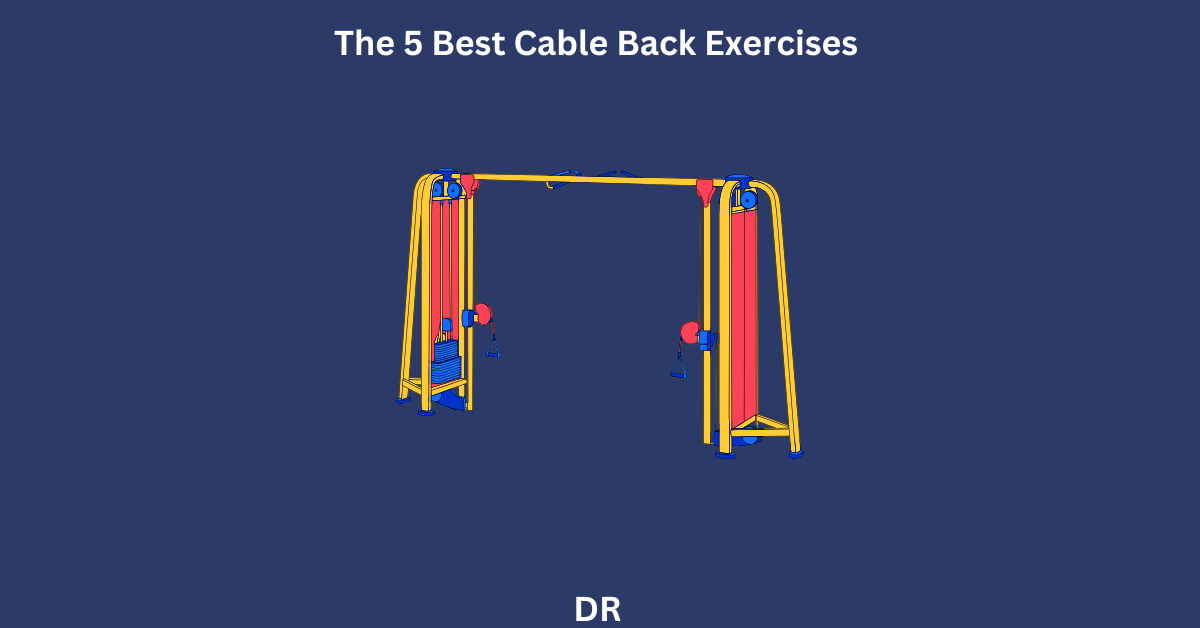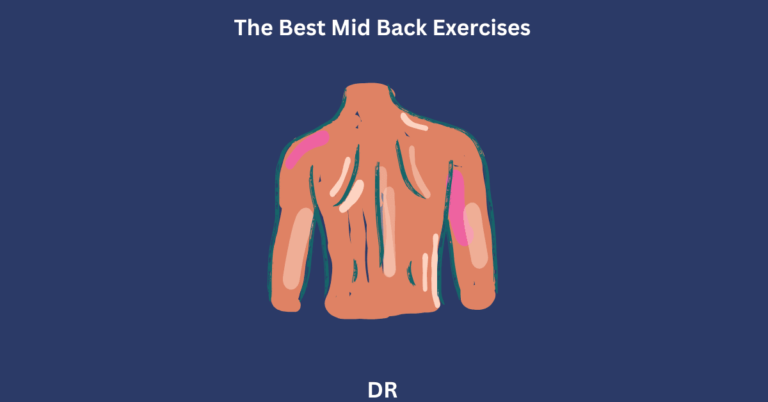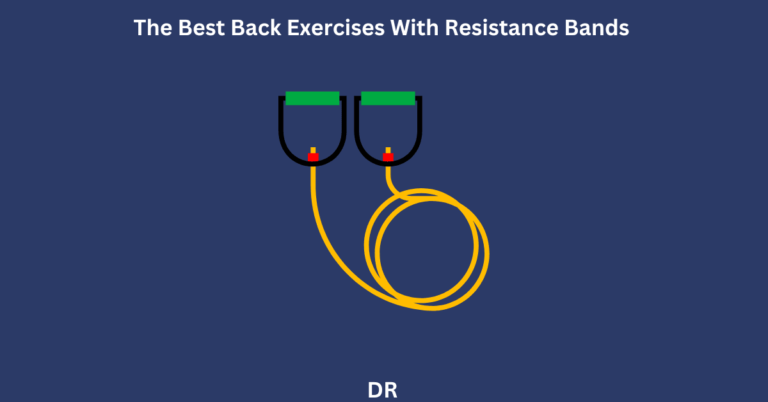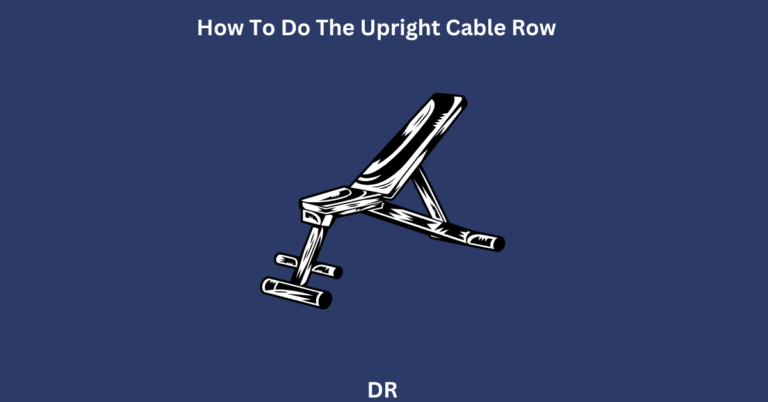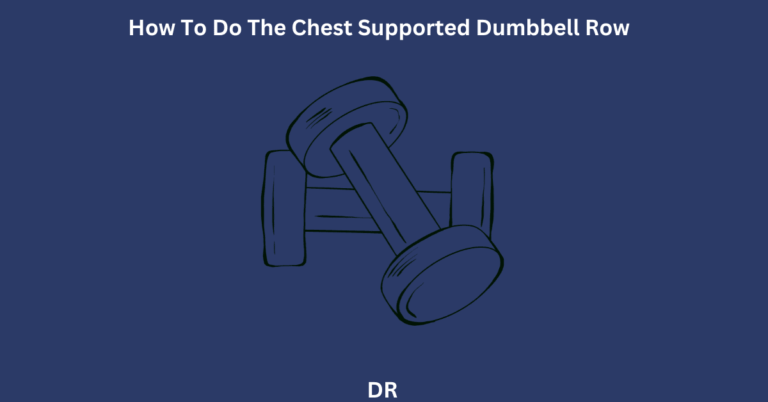The 5 Best Cable Back Exercises in 2024
Cable back exercises are a valuable addition to any workout because they provide consistent tension throughout the movement. Unlike free weights, where tension can vary based on gravity, cables maintain constant resistance, which helps in muscle engagement across the entire range of motion. This makes cable exercises particularly effective for building back strength, improving posture, and enhancing muscle definition. Common cable back exercises like seated rows, lat pulldowns, and face pulls work multiple muscles, including the lats, traps, and rhomboids, which support a strong and balanced upper body.
Additionally, cable machines allow for smooth, controlled movements, which reduces strain on the joints and minimizes the risk of injury. They are also highly adjustable, enabling users to target specific areas of the back and tailor the exercise intensity to their fitness level. For beginners and experienced lifters alike, cable back exercises can be easily modified by adjusting the weight or grip, offering a flexible, safe, and effective way to build a strong, resilient back.
Just getting comfy in the fitness scene? Cable exercises will lay a rock-solid foundation for you to build on while helping you face off against weaker muscle groups. Don’t miss our quick detour to back exercises with resistance bands if you’re up for something easier on the joints too.
Safety and Muscle Isolation
Safety first! Whether you’re new to the gym or recovering from an injury, cable exercises provide the control you need to focus on form. With smooth, stable movements, they allow you to work out safely without any awkward swinging.
Cable exercises also help you target specific muscles that often get missed, like traps and rear delts. For instance, a seated cable row lets you hone in on your lats and mid-back without the strain or hassle of heavier, complex equipment.
The magic of cables means you’re moving in more than one direction, calling into action fibers those dusty weights overlook. Curious? Learn how a seated cable row can be your new best bud for back muscle action.
Ready for a gym glow-up? Cables might change the game, safely steering beginners and those honing muscle isolation towards buff land. More moves and muscle gains await across advanced cable back exercises.
Key Cable Back Exercises
Here are some of my go-to cable back exercises that have been game-changers for building strength and adding variety to my routine. Each move targets different muscles in the back and can be easily adjusted to fit any fitness level, so you get a workout that’s effective and personalized.
1) Seated Cable Row
The Seated Cable Row isn’t just a flashy gym move; it’s a staple for building a strong mid-back. This exercise not only adds solid strength but also helps improve posture by engaging key muscles that support a straight, stable back.
- Plop yourself down at the seated cable rowing machine; feet firm on the footpads.
- Grab the handle with both hands, keep those knees comfy-bent.
- Tug that handle to your chest, and get those shoulder blades hugging.
- Let the handle return smoothly, keeping things steady as you go back.
Benefits:
- Zeroes in on mid-back muscle.
- Posture, we’re talking better than ever.
- Pumps up back strength, helping with pals like dumbbell row and barbell row.
Check out more right here.
2) Lat Pulldown

Lat Pulldowns are perfect for targeting your lats. They’re great if you want to master bodyweight exercises and take your barbell lifts to the next level. This move helps build the strength and muscle definition you need for both.
- Sit at a lat pulldown machine, grab that bar with an overhand grip, a smidge wider than your shoulders.
- Pull it down to chest level, elbows tucked in – no running off!
- Bring it back to the start, arms nice and stretched.
Benefits:
- Focuses on those lats and the biceps for good measure.
- Handy for upping your game in pull-ups and such.
- Pumps up power for other heavy-lifters like bent-over rows.
For the full scoop, head on over to Garage Gym Reviews.
3) Cable Face Pulls
If you want to target your upper back with some added focus, Cable Face Pulls are a must. They’re great for hitting the rear delts and rhomboids, while also giving your rotator cuffs some much-needed attention—essential for keeping your shoulders healthy and strong.
- Hook a rope to the cable machine’s high pulley.
- Grab each end of the rope, knuckles-to-knuckles.
- Pull towards your face, elbows out like you’re saying ‘hi’ to your ears.
- Let the blades do their shoulder-town squeeze, then chill back to start.
Benefits:
- Works the rear delts, rhomboids, rotator cuffs.
- Boosts shoulder stability and gives you that Batman range of motion.
- Keeps shoulders ticking over healthily.
Snag more tips over at Garage Gym Reviews.
| Exercise | Target Muscles | Main Benefits |
|---|---|---|
| Seated Cable Row | Mid-back | Better posture, stronger back |
| Lat Pulldowns | Lats, biceps | Muscle boost, nailed bodyweight skills |
| Cable Face Pulls | Rear delts, rhomboids, rotator cuffs | Solid shoulders, expanded motion |
Looking for more back gear and guidance? Dive into our stash on upper back exercises, lower back machine workouts, and hardcore compound moves.
Advantages of Cable Workouts
Range of Motion
If you’re like me, cable workouts will transform your back training routine. The flexibility they offer beats free weights and other equipment, allowing you to target your back from multiple angles. This full range of movement keeps your muscles engaged longer, helping you maximize gains, as sources like Garage Gym Reviews suggest.
Adding cable exercises to my routine lets me focus on my entire back or target those hard-to-reach muscles. By adjusting the direction and height of the cables, you can find the perfect angle for each muscle group. Pulling from low works the lower back, while pulling from high targets the upper back, giving you a full, well-rounded workout.
| Exercise | Motion Plane | Muscles Hit |
|---|---|---|
| Seated Cable Row | Back ‘n Forth | Mid-Back |
| Lat Pulldowns | Front/Back | Upper Back |
| Cable Face Pulls | Twist | Upper Back & Shoulders |
Knowing how to maneuver this range of motion lets me hit that muscle isolation vibe, making my back workouts pop.
Muscle Activation
Cable workouts are gold for muscle activation; we’re talking every fibre being put to work. You know that tension you feel when you pull the cable? That’s continuous pressure keeping your muscles awake the whole time, making cable exercises primo for muscle growth and activation. Experiences like BOXROX tell me it’s all about that smooth, steady push and pull.
With cables, my back gets a solid workout since the muscles don’t get a break until I’m done, which means gains in strength and those muscle tones everyone notices. The constant tension machines provide helps fill out those smaller, stabilizing muscles that free weights might forget about, something Mikolo Fitness backs up.
Mix it up by changing grips or shifting from seated to standing when you’re cable training—that’s how you keep those muscles engaged and guessing. Fancy some extra tips? Have a peep at our dumbbell back exercises guide.
By adding cables into the mix, I’ve gotten better at singling out and beefing up my back muscles. It’s also kept me from tipping the scales on one side, dodging any wonky back problems while keeping everything balanced and healthy.
Cable workouts are my go-to when I want to push my back exercises a notch higher in terms of safety, efficiency, and alignment with my future buff goals. Whether you’re after muscle bulk or some clean definition, cables are your back’s best grind partner. And for specific muscle tinkering, exploring options like upper back exercises and lower back exercises gym equipment keeps things varied and effective.
Targeted Muscle Groups
So you want to tackle cable back exercises, huh? Let’s break it down, nice and simple. Your back has got some prime real estate—three main hangouts: the upper, mid, and lower back.
Upper Back
Welcome to the upper circle, featuring the trapezius, rhomboids, and those sneaky rear delts. Think of them like the backstage crew at a concert—crucial for lifting and pulling off big movements.
Give Cable Face Pulls a go. They’re like a personal masseuse for your traps and rhomboids—and you’ll probably even stand up a little straighter by the end of your session.
Don’t forget the Lat Pulldowns and Seated Cable Rows—they’re the dynamic duo of upper back exercises. Want more juice? Check our upper back exercises guide.
| Exercise | Target Muscles |
|---|---|
| Cable Face Pulls | Trapezius, Rhomboids, Rear Delts |
| Lat Pulldown | Lats, Trapezius, Rhomboids |
| Seated Cable Row | Lats, Rhomboids, Trapezius, Biceps |
Mid-Back
Rollin’ down to mid-back territory, where you’ll meet the latissimus dorsi (a.k.a. lats), the lower traps, and those spinal erectors. These fellas keep your core tight and ready for action—whether it’s a deadlift or picking up a stubborn sock.
Seated Cable Rows pull their weight here, getting the lats and rhomboids fired up while giving the biceps a side hustle. Play around with grips to hit every nook and cranny of the mid-back.
Fancy some more moves? Have a look at mid back exercises for a treasure trove of ideas.
| Exercise | Target Muscles |
|---|---|
| Seated Cable Row | Lats, Rhomboids, Middle Traps |
| Cable Pullovers | Lats, Teres Major |
| Straight-Arm Pushdowns | Lats, Triceps |
Lower Back
And here’s the lower back—a.k.a. the lumbar lounge. Holding it down are the powerhouse erector spinae, the unsung heroes in keeping posture on point and back pain at bay.
Cable Deadlifts and Cable Back Extensions—these guys pack a punch, delivering constant tension that fuels muscle growth and strength like a boss.
Craving more ways to help your lumbar lift? Drop by our lower back cable exercises for the lowdown.
| Exercise | Target Muscles |
|---|---|
| Cable Deadlift | Erector Spinae, Glutes, Hamstrings |
| Cable Back Extension | Erector Spinae |
| One-Arm Cable Row | Erector Spinae, Lats, Rhomboids |
Mix these cables into your routine to sculpt a back that’s as solid as a rock. By targeting specific muscles, you make sure nobody in your back lineup feels left out. If you’re new to the game, swing by our back strengthening exercises for seniors for adapted routines to keep it safe and sound.
Perfecting Cable Row Form
Nailing the right moves in cable rows is the ticket to a back that’s not just strong but defines strength. Let me break it down for you with some muscle talk and quick tips to keep that form on point.
Muscle Engagement
You want to make sure those muscles are doing the heavy lifting and not just going along for the ride. Here’s a bit of who-to-engage:
- Latissimus Dorsi: These guys are the big muscles running down your sides. Pull those elbows down and back for the perfect engagement.
- Rhomboids: Nestled between your shoulder blades. Think of squeezing those shoulder blades together for a good workout.
- Middle Trapezius: Right smack in the middle of your back. Just like with the rhomboids, retract those scapulae to give them some love.
Cables are your back’s best mate, really, offering a good range of motion, upping that flexibility game, isolating those muscles, and lowering injury chances linked with the usual dumbbells and barbells struggles (Speediance).
Technique Tips
Let’s chat about getting those cable rows right so you’re putting in work where it counts:
- Starting Position:
- Plant yourself on the machine; feet should be firmly on those footrests.
- Grip the handle with both mitts, sit up nice and tall with that straight back.
- Execution:
- Move the handle to your lower stomach area, elbows tight to your sides.
- Focus on a good shoulder blade squeeze at the peak of the row.
- Breathing:
- Inhale on the extension, bringing it back to square one.
- Exhale when you pull that handle toward you.
- Avoiding Common Mistakes:
- Using Momentum: Stop swinging like you’re on a playground. Let your muscles do the controlling.
- Rounding Your Back: Keep your spine in line, shoulders rolled back.
- Elbows Flaring Out: Lock those elbows in close to your bod to wake up those lats.
| Mistake | Correction |
|---|---|
| Using Momentum | Slow it down, make each move count. |
| Rounding Back | Keep your spine straight with shoulders back. |
| Elbows Out | Hug your elbows to your sides. |
Newbie at the cable back workouts? Begin steady with weights that match your form finesse. Work your way up in weight as strength styles up.
With nitty-gritty tips tucked in your workout plan, you’re set to elevate those cable row workouts. For stretching your routine further, jump on our upper back exercises guide that’ll load you with fresh ideas!
Choosing the Right Weight
So, you’re trying to pick the right weight for cable back exercises. It’s a bit like buying jeans—you want them to fit just right, not too loose and definitely not so tight you can’t breathe! Let’s see how you can safely push your limits without a trip to the physio.
Balancing Challenge
When it comes to choosing the right weight for cable back exercises, I’m going for the Goldilocks effect: not too heavy, not too light, but just right. Overdo it, and you might find yourself in a wrestling match with the equipment—not fun and no thanks (BOXROX). But a weight that’s feather-light? Your muscles won’t even notice they’ve been invited to the party.
Here’s how I’ve nailed it down (and you can too):
- Warm-Up: Begin with a lightweight, ease into the movement, and get your muscles saying, “Oh, we’re doing this now?”
- Step by Step: Add weight in small steps until you hit a sweet spot where you can do 8-12 reps without turning into a contortionist.
- Check Yourself: Form is queen. If you’re wobbly before the last rep, scale back asap.
- Feel the Burn: Those last few reps should feel like a final showdown, challenging but doable. Say no to sloppy form just to get through the set.
Injury Prevention
Staying injury-free is like having a superpower in the gym. It all starts with choosing the right weight when working with cables. As Athlean-X recommends, pick a weight that lets you maintain good form and complete your reps without straining. Keep these tips in your back pocket for a safer, more effective workout:
- Prioritise Form: Go heavy on technique. Trust me, your joints and muscles will thank you later.
- Hear Your Body Talk: If your body sends out an SOS, pause, check what’s going wrong, and adjust.
- No Need to Rush: Push the boundaries, but don’t go Hulk on the weights overnight. Patience, my friend.
- Rest Is Best: Give your muscles time out between workouts! They need their beauty sleep to rebuild stronger.
- Warm It Up and Wind It Down: Kickstart your session with a warm-up, and finish it with a cool-down so your body knows it’s showtime and then time to chill.
By finding that sweet spot between pushing limits and staying sensible, you can really make those cable back workouts count without unwanted injuries crashing the party. Fancy more muscle-building ideas? Step into our dumbbell back exercises and lower back exercises gym equipmentbits.
Versatility of Cable Workouts
Versatility of cable workouts are what make them so amazing in my opinion. I love what cables can do in terms of the constant tension on my muscles, and I love them for my back workouts.
Adapting to Grip
A great thing about cable workouts is how easy it is to switch up your grips. Changing grips can target different muscles and make your session more effective. Mix it up to activate muscles in new ways and keep your workouts fun and challenging.
- Overhand Grip: Great for exercises like lat pulldowns, this grip hones in on the upper back, especially the latissimus dorsi.
- Underhand Grip: Usually found in seated cable rows, this grip leans into mid-back and even gets those biceps involved.
- Neutral Grip: Found in moves like one arm cable row, this grip offers a comfy wrist position, striking a balance across the upper and mid-back.
| Exercise | Grip Type | Targeted Muscles |
|---|---|---|
| Lat Pulldown | Overhand | Upper Back, Lats |
| Seated Cable Row | Underhand | Mid-Back, Biceps |
| One Arm Cable Row | Neutral | Upper and Mid-Back |
Switching up grips can also help fend off those annoying overuse injuries, which might catch up to you when sticking solely with dumbbell back exercises or barbell row.
Targeting Muscle Imbalances
Muscle imbalances are no fun—uneven workouts or potential injuries? No thanks. Luckily, the precise control offered by cable machines comes to the rescue.
If there are some slacker muscles in your back, cable exercises are your ticket to addressing them. Ignored muscles found wanting with back exercises with barbell and kettlebell back exercises can get their fair share of work, ensuring a balanced physique (Garage Gym Reviews).
- Single-Arm Exercises: One arm cable row and single-arm lat pulldowns let you zoom in on one side at a time, so those lazy muscles get given their marching orders.
- Adjustable Angle Movements: Shifting cables around can help engage those small muscles often left in the dust during heavy lifters like the pendlay row.
Key Points to Remember
- Cable workouts keep those muscles working hard from start to finish, ensuring they’re never snoozing on the job (Speediance).
- Once you’ve got a good idea of which muscles you need to target—upper, mid, or lower back—you can focus on connecting your mind to the right muscles (Athlean-X).
- Variety of attachments and weights on that cable machine make sure your movements are smooth, which is vital for packing on muscle (SET FOR SET).
Don’t skip on both compound back exercises and focused moves. They’re the dream team for strong and symmetrical muscles.
4) Cable Shrugs
Want to build some impressive traps? Cable shrugs are your go-to move. They target the trapezius muscle, which plays a key role in shoulder stability and overall body balance. Plus, strong traps not only look cool but also help you lift heavier during compound exercises.
- Target Muscles: Hitting the upper, middle, and lower trapezius.
- Form Tips: Stand tall and hold the cable handles beside you. Now, shrug your shoulders up like you’re saying, “I don’t know!”—as high as you can, and then slowly lower them back. Keep those shoulders straight; none of that rolling stuff unless you’re looking for trouble!
| Muscle Group | Effectiveness |
|---|---|
| Upper Trapezius | Top-tier |
| Middle Trapezius | Solid |
| Lower Trapezius | Just okay |
Craving more ways to work your upper back? Check out our guide on upper back exercises.
5) Incline Cable Pullover
The Incline Cable Pullover is a hidden gem for building back definition and strength. Master this move, and your lats, teres major, and upper back muscles will thank you. The best part? It also works your stabilizer muscles, helping to make your upper body strong and well-rounded.
- Target Muscles: Lats, teres, and muscles upstairs.
- Form Tips: Get that bench in incline mode. Hook up a straight bar to the low pulley, lie back and brace those feet on the floor. With both hands, grab the bar and stretch your arms overhead. Now, bring the bar over your head to your chest—keep a mild bend in those elbows—then ease it back.
| Muscle Group | Effectiveness |
|---|---|
| Latissimus Dorsi | Excellent |
| Teres Major | Pretty good |
| Upper Back | Decent |
Curious about more exercises to finesse your lats? Read our piece on back exercises for lats.
Toss these advanced cable moves into your routine and watch your back muscles come alive like magic. If you’re looking to even things out, dive into our articles on lower back exercises gym equipment and mid back exercises for a well-rounded approach.

